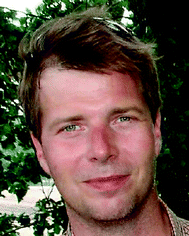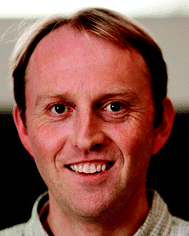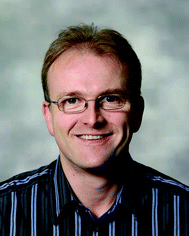Systems chemistry: a web themed issue
Bartosz
Grzybowski
a,
Sijbren
Otto
b and
Douglas
Philp
c
aChemical and Biological Engineering, Northwestern University, 2145 Sheridan Rd, TECH E136, Evanston, Illinois 60208, USA. E-mail: grzybor@northwestern.edu
bCentre for Systems Chemistry, Stratingh Institute, University of Groningen, Nijenborgh 4, 9747 AG, Groningen, The Netherlands. E-mail: s.otto@rug.nl
cSchool of Chemistry and EaStCHEM, University of St. Andrews, North Haugh, St. Andrews, Fife KY16 9ST, UK. E-mail: d.philp@st-andrews.ac.uk
Complex systems are all around us. Just think of the internet, the stock market, your own brain, human society etc. Such complex systems are more than just complicated; their complexity gives rise to many unique properties. Systems in which many different components interact with each other can give rise to emergent phenomena, which arise as a property of the system and cannot be ascribed to or predicted from the properties of any of the system’s components acting in isolation. Examples include the whirlpool when you remove the plug from your bathtub, the behaviour of an ant colony and the formation of neighbourhoods in a large city.
The investigation of complexity is well developed in many scientific disciplines, ranging from mathematics to sociology. However, in chemistry, complex systems remain under-investigated. Yet, of all disciplines, chemistry has the most potential to reveal interesting phenomena. Life is a stunning example of what complex chemical systems can give rise to. Nevertheless, life is only one manifestation of complexity in chemistry. Once chemists learn how to design their own functional systems the opportunities are almost boundless. While we still have a lot to learn before we reach that stage, research in systems chemistry is gaining momentum. The tremendous advances in synthetic chemistry and analytical chemistry during the last few decades are now enabling us to design, prepare and analyse complex chemical systems. With the aid of modelling and other computational tools our understanding of the behaviour of these systems is increasing continuously. Thus, a field of systems chemistry is emerging and is being populated by an interesting mix of chemists from a variety of backgrounds, including scientists investigating the origin of life, supramolecular chemistry and physical chemists investigating nonlinear dynamic phenomena, such as oscillating reactions.
This themed online issue of Chemical Communications reflects the diversity of topics that represent the current thrusts of systems chemistry. Specific topics that are addressed include:
• Compartmentalisation. A feature article by Walde, Umakoshi, Stano and Mavelli describes the role of vesicles on chemical reactions.
• Reaction networks, including dynamic combinatorial libraries. A feature article by Le Saux, Plasson and Jullien focusses on energy propagation through molecular networks. The issue also contains reports on dynamic combinatorial libraries by Ulrich and Dumy and Alfonso et al. and a report by Grover et al. on the design of non-equilibrium steady states in peptide networks. Ramström et al. report the use of a reaction network for the kinetic resolution of α-iminonitriles. Work by Miljanic et al. shows how four different dehydration reactions can proceed in the same flask with minimal mutual interference. Finally, Barboiu et al. describe self-sorting in a dynamic combinatorial library of coordination compounds.
• Oscillating and switching reactions. A feature article by Epstein reviews the area of coupled oscillators. Szalai et al. describe how patterns can be generated by coupling a pH oscillator to a complexation equilibrium. Taylor et al. report a pH switch mediated by enzyme-loaded beads.
• Autocatalytic systems. Horváth et al. report on the coupling of an autocatalytic reaction with a precipitation process to generate permanent patterns. Monnard et al. describes the self-replication of protocells in which both parent and offspring retained the capability to catalyse amphiphile production.
• Complex self-assembling systems. Contributions from van der Boom et al., Nieckartz and Szabelski, Ashkenasy et al., Ulijn et al. and Tóth et al. describe various aspects of complex self-assembly.
• Prebiotic chemistry. Pascal et al. describe the use of oxazolones in diastereoselective peptide coupling reactions.
We are grateful to all authors and referees who contributed to this web theme and hope that the reader will find this collection as inspiring as we do.
| This journal is © The Royal Society of Chemistry 2014 |



